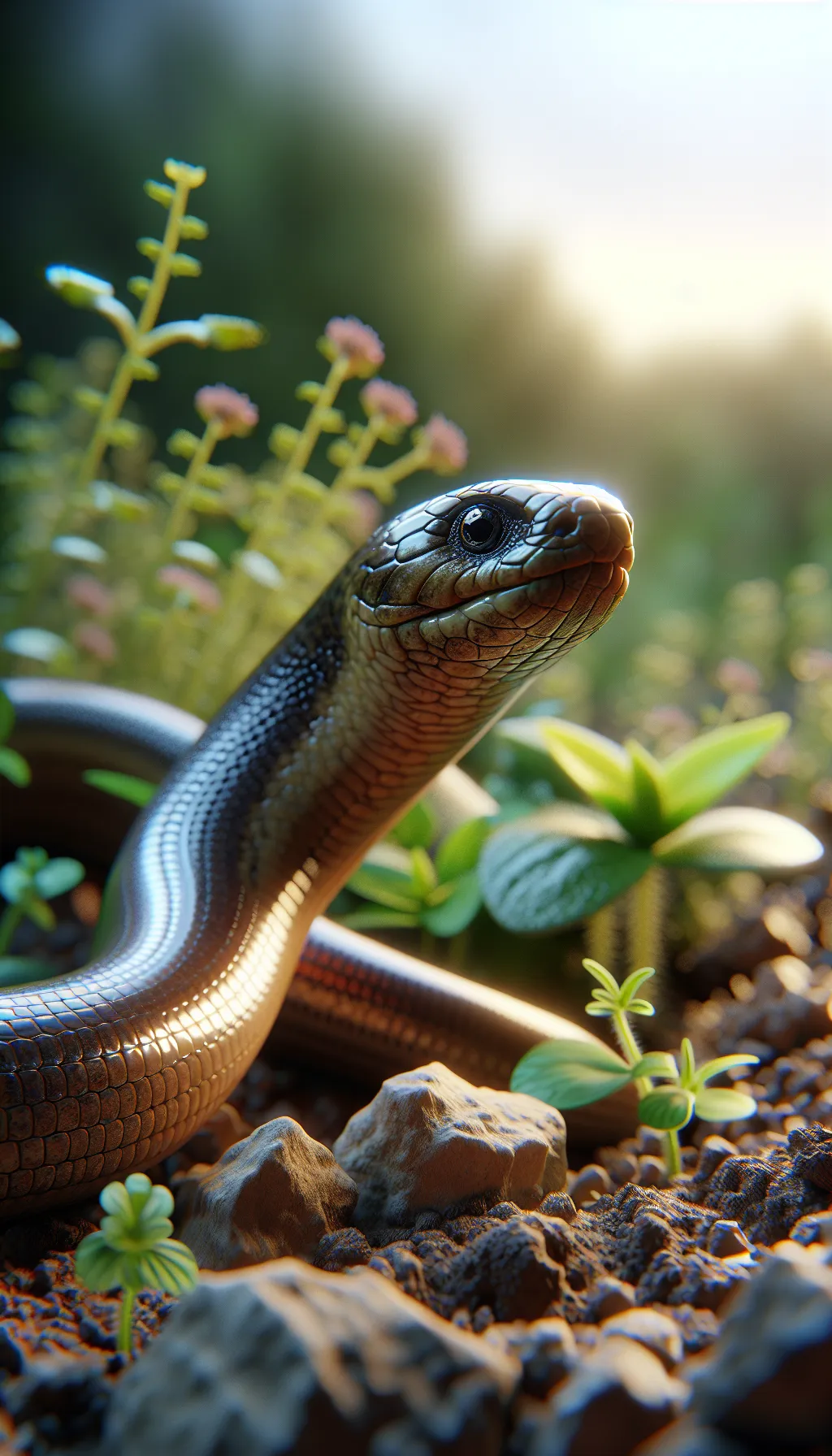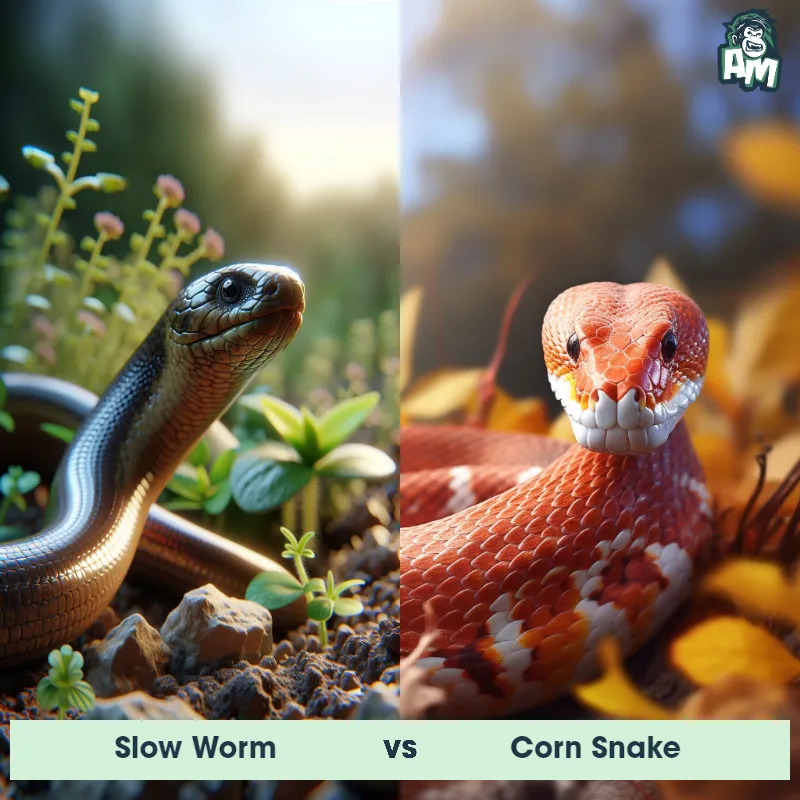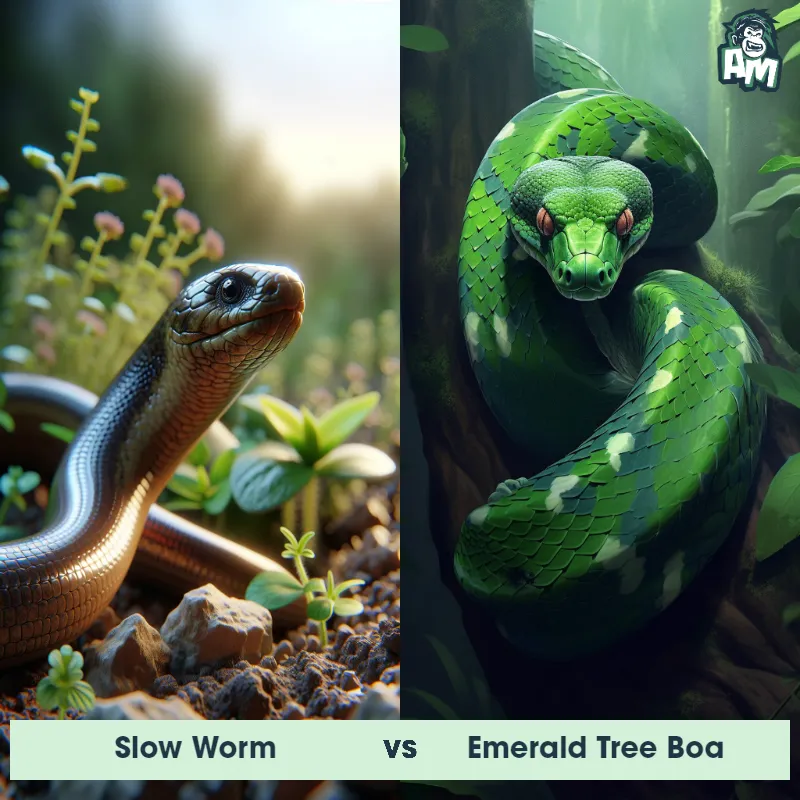The Slow Worm
Slow worms are legless lizards that can be found across Europe and parts of Asia. They have smooth, shiny scales and can grow up to 50cm long. Their color can vary from grey to brown, with some individuals displaying a coppery hue. Slow worms have small eyes and a forked tongue, which they use to sense their surroundings. Despite their name, they are not worms at all but are actually reptiles.

| Slow Worm | |
|---|---|
| Size | 30-40 cm (12-16 inches) |
| Weight | 50-100 grams (1.8-3.5 ounces) |
| Speed | 13-20mph (21-32km/h) |
| Key Strength | Agility |
| Biggest Weakness | Fragile tail |
| Scientific Name | Anguis fragilis |
| Family | Anguidae |
| Habitat | Grasslands, woodlands, gardens |
| Geography | Europe and parts of Asia |
| Diet | Slugs, insects, worms |
| Lifespan | 15 years - 30 years |

The Slow Worm
Slow worms are legless lizards that can be found across Europe and parts of Asia. They have smooth, shiny scales and can grow up to 50cm long. Their color can vary from grey to brown, with some individuals displaying a coppery hue. Slow worms have small eyes and a forked tongue, which they use to sense their surroundings. Despite their name, they are not worms at all but are actually reptiles.
Fun Fact: Unlike snakes, slow worms can blink and shed their tails in defense mechanisms against predators.
| Slow Worm | |
|---|---|
| Size | 30-40 cm (12-16 inches) |
| Weight | 50-100 grams (1.8-3.5 ounces) |
| Speed | 13-20mph (21-32km/h) |
| Key Strength | Agility |
| Biggest Weakness | Fragile tail |
| Scientific Name | Anguis fragilis |
| Family | Anguidae |
| Habitat | Grasslands, woodlands, gardens |
| Geography | Europe and parts of Asia |
| Diet | Slugs, insects, worms |
| Lifespan | 15 years - 30 years |
Slow Worm Matchups
We use AI to simulate matchups between the Slow Worm and other animals. Our simulation considers size, strength, and natural predatory behaviors to determine the most likely outcome.

Can't find the Matchup you want?
Create Your Own MatchupSlow Worm: Diet, Predators, Aggression, and Defensive Behaviors
What do Slow Worms eat?
Slow Worms primarily feed on slugs, snails, insects, and other small invertebrates. They are known to consume earthworms as well, making them beneficial for controlling pest populations in gardens.
Do Slow Worms have any predators?
Slow Worms have predators such as birds of prey, snakes, and some mammals like foxes and badgers. They are also at risk from domestic pets, like cats and dogs, which may mistake them for snakes.
Are Slow Worms aggressive?
Slow Worms are not aggressive towards humans or other animals. They are non-venomous and tend to avoid confrontation when threatened. However, they may display defensive behaviors when endangered.
Do Slow Worms fight?
Slow Worms do not engage in physical fights with other animals or conspecifics. They rely on evasive tactics, such as slithering away quickly or hiding in burrows or under vegetation, to avoid danger.
How do Slow Worms defend themselves?
Slow Worms have several defense mechanisms to protect themselves from predators. When threatened, they can drop their tail as a distraction, allowing them to escape with minimal harm. Their scaly skin also offers some protection against predators.
What is the Slow Worm's biggest weakness in a fight?
The Slow Worm's lack of limbs is its biggest weakness in a fight. Without limbs for defense or offense, they rely heavily on agility and camouflage to escape potentially dangerous situations. This vulnerability leaves them susceptible to predation by larger or more aggressive animals.
Fun Fact: Slow worms are ovoviviparous, meaning that their eggs develop and hatch inside the mother's body before being born alive, making them a unique reptile species.
Fun Fact: Slow worms are frequently mistaken for snakes due to their appearance and behavior, but they are actually more closely related to lizards.













